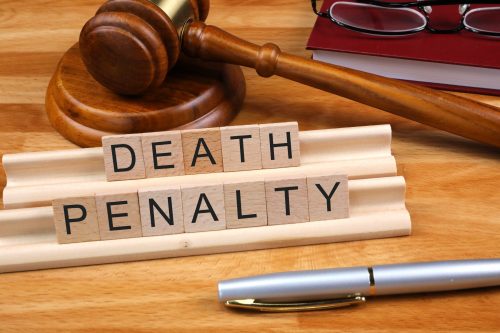
By Melinda Kukaj
AUSTIN, TX – Texas is the only state in the country requiring a jury to determine whether or not an accused presents future dangers to society before imposing a death penalty sentence, writes Austin Sarat, the William Nelson Cromwell Professor of Jurisprudence and Political Science at Amherst College, in The Hill.
Sarat uses the example of Ramiro Gonzales, who the state plans to execute on June 26, writing, “Gonzales was sentenced to death in 2006 for kidnapping, sexually assaulting and fatally shooting 18-year-old Bridget Townsend five years earlier.”
According to Sarat, “One of the key factors that led the jury to sentence Gonzales to death was testimony offered by psychiatrist Edward Gripon claiming, with certainty, that Gonzales would be a future danger.”
The Hill’s Sarat states this law, created in 1973, “has spawned an industry of experts who, like Gripon, make themselves available to testify for the state about future dangerousness. Gripon estimates he ‘testified in roughly 25 death penalty cases.’”
According to Sarat, Gripon is far from the most infamous, noting “that distinction belongs to psychiatrist James Grigson.
As a post from Vanderbilt Law School explains, “Grigson, nicknamed ‘Dr. Death,’ testified in over 150 capital murder trials for the prosecution in Texas and often stated that there was a 100 percent chance that capital murder (accused) would kill again, despite never having personally examined them.”
“In the Gonzales case, Gripon told the jury that the (accused) ‘certainly’ had antisocial personality disorder, and potentially ‘some type of significant underlying psychosexual disorder,’” as stated by Sarat.
Sarat states Gripon concluded Gonzales, no matter where he is, would continue to pose a threat to commit more acts of violence, writing Gripon testified “sexual assault has the highest continuum of recidivism,” and “there is lots of data out there” indicating recidivism rates “are way up in the 80 percentile or better.”
According to Sarat, Journalist Abbie VanSickle, writing in The Atlantic, “notes that people like Grigson and Gripon had to tell the jury ‘whether there is a probability that the (accused) would commit criminal acts of violence that would constitute a continuing threat to society.’ VanSickle rightly labels this question “convoluted.”
Sarat, in The Hill, reports there are several approaches that can be used to predict the danger an accused poses, arguing that “the AMA Journal of Ethics identifies common approaches while warning of the unreliability of each one.”
According to Sarat, the first that the journal notes are “actuarial approaches…(an) attempt to assess individual risk using information derived from group data rather than from an individualized assessment of dangerousness.”
The accuracy of such assessments in predicting rare events is “low because its prediction is limited to those who are similar to the population from which the actuarial data were drawn,” Sarat adds.
Additionally the journal notes “clinical approaches,” which according to Sarat depends on “individualized and contextualized assessments based upon nothing more than a psychiatrist’s intuition, experience, and clinical orientation.”
Sarat also maintains “identification of risk factors in the clinical approach is, the Journal of Ethics concludes, ‘vulnerable to individual bias.’ In fact, we know that race plays a key role in predictions of future dangerousness, with people of color much more likely to be labeled as a future danger, especially in capital cases.”
Not only are people of color at risk, according to Sarat, “experts, like Gripon in the Gonzales case, erroneously associate dangerousness with mental illness. As the Journal of Ethics notes, ‘The absolute risk of violence among the mentally ill as a group is…very small.’”
Sarat writes in The Hill there are current issues with the Gonzales case, noting, “at trial, as The Independent stated, ‘Gripon relied on facts that were later proven false. He told the jury that people who commit sexual assault are especially likely to reoffend, but the basis for that claim was later discredited and numerous studies have shown they aren’t.’”
Sarat further notes that “even Dr. Gripon, who evaluated Gonzales again two years ago, has changed his mind. Talking about his 2006 testimony, Gripon now says ‘I don’t think that diagnosis would now be accurate, particularly in retrospect” — and most importantly, that Gonzales does not present a danger to others.’”
According to Sarat, Dr. Gripon concludes, “if this man’s sentence were changed to life without parole, I don’t think he’d be a problem.”
Sarat concludes, “Texas should listen to its own expert and spare Gonzalez’s life. In addition, it should pay attention to the position of the American Psychiatric Association that the question of future dangerousness should no longer play a role in jury decisions in capital cases. As the APA notes, “[t]he unreliability of psychiatric predictions of long-term future dangerousness is by now an established fact within the profession.”